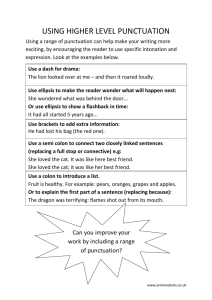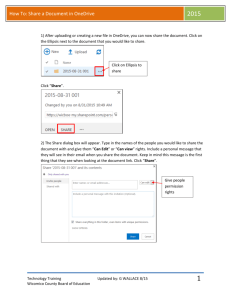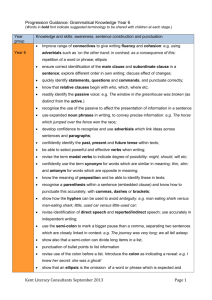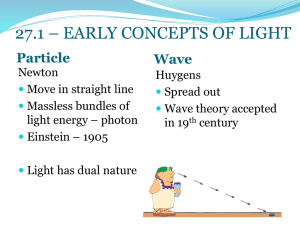Processing Opacity
advertisement
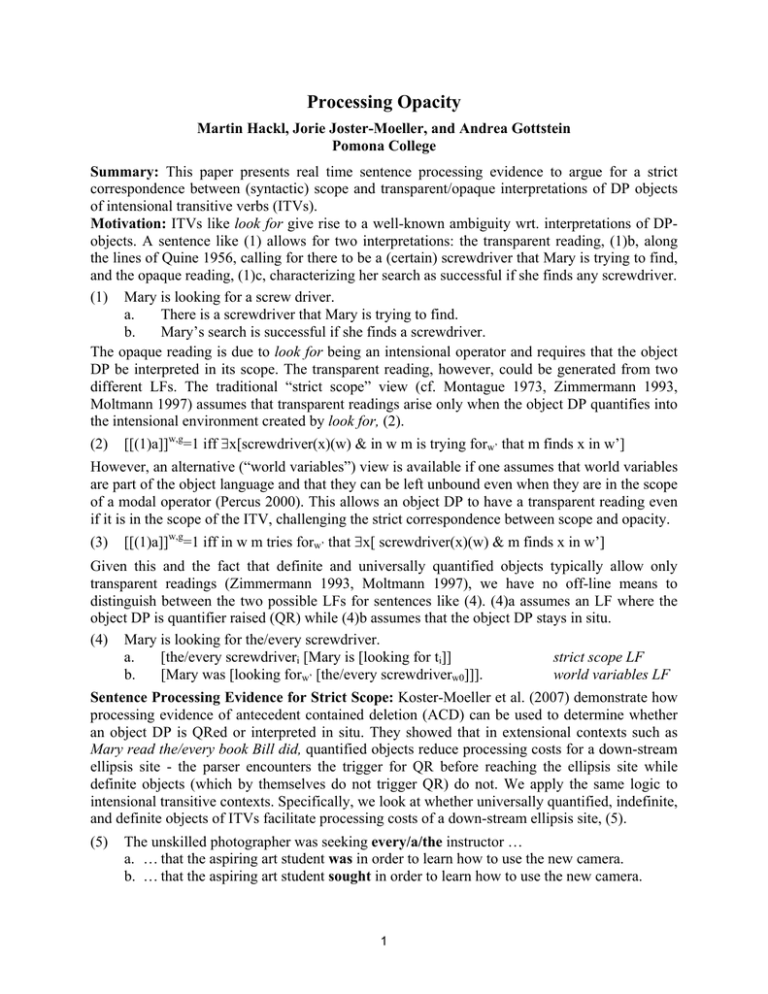
Processing Opacity Martin Hackl, Jorie Joster-Moeller, and Andrea Gottstein Pomona College Summary: This paper presents real time sentence processing evidence to argue for a strict correspondence between (syntactic) scope and transparent/opaque interpretations of DP objects of intensional transitive verbs (ITVs). Motivation: ITVs like look for give rise to a well-known ambiguity wrt. interpretations of DPobjects. A sentence like (1) allows for two interpretations: the transparent reading, (1)b, along the lines of Quine 1956, calling for there to be a (certain) screwdriver that Mary is trying to find, and the opaque reading, (1)c, characterizing her search as successful if she finds any screwdriver. (1) Mary is looking for a screw driver. a. There is a screwdriver that Mary is trying to find. b. Mary’s search is successful if she finds a screwdriver. The opaque reading is due to look for being an intensional operator and requires that the object DP be interpreted in its scope. The transparent reading, however, could be generated from two different LFs. The traditional “strict scope” view (cf. Montague 1973, Zimmermann 1993, Moltmann 1997) assumes that transparent readings arise only when the object DP quantifies into the intensional environment created by look for, (2). (2) [[(1)a]]w,g=1 iff ∃x[screwdriver(x)(w) & in w m is trying forw’ that m finds x in w’] However, an alternative (“world variables”) view is available if one assumes that world variables are part of the object language and that they can be left unbound even when they are in the scope of a modal operator (Percus 2000). This allows an object DP to have a transparent reading even if it is in the scope of the ITV, challenging the strict correspondence between scope and opacity. (3) [[(1)a]]w,g=1 iff in w m tries forw’ that ∃x[ screwdriver(x)(w) & m finds x in w’] Given this and the fact that definite and universally quantified objects typically allow only transparent readings (Zimmermann 1993, Moltmann 1997), we have no off-line means to distinguish between the two possible LFs for sentences like (4). (4)a assumes an LF where the object DP is quantifier raised (QR) while (4)b assumes that the object DP stays in situ. (4) Mary is looking for the/every screwdriver. strict scope LF a. [the/every screwdriveri [Mary is [looking for ti]] world variables LF b. [Mary was [looking forw’ [the/every screwdriverw0]]]. Sentence Processing Evidence for Strict Scope: Koster-Moeller et al. (2007) demonstrate how processing evidence of antecedent contained deletion (ACD) can be used to determine whether an object DP is QRed or interpreted in situ. They showed that in extensional contexts such as Mary read the/every book Bill did, quantified objects reduce processing costs for a down-stream ellipsis site - the parser encounters the trigger for QR before reaching the ellipsis site while definite objects (which by themselves do not trigger QR) do not. We apply the same logic to intensional transitive contexts. Specifically, we look at whether universally quantified, indefinite, and definite objects of ITVs facilitate processing costs of a down-stream ellipsis site, (5). (5) The unskilled photographer was seeking every/a/the instructor … a. … that the aspiring art student was in order to learn how to use the new camera. b. … that the aspiring art student sought in order to learn how to use the new camera. 1 rRT (ms) Predictions: According to the “strict scope” view, in-situ DPs are always interpreted opaquely. Since both every instructor and the instructor do not tolerate opaque interpretations for independent reasons, they have to undergo QR. This should be detectable when comparing reading times for relative clauses with an ellipsis site, (5)a, with reading times where there is no ellipsis, (5)b. More precisely, following the results of Koster-Moeller et al (2007) there should be no significant difference between every-was and every-V nor should there be a significant difference between the-was and the-V. Indefinite objects, on the other hand, can give rise to opaque readings. If they do, they need to be interpreted in-situ, which predicts no facilitation of processing a down-stream ellipsis site. Again, following the results in Koster-Moeller et al. (2007) this should surface as a significant increase in reading times of a-was compared to a-V. The “world variables” view, on the other hand, predicts no facilitation for any of the three DPs since both transparent and opaque readings are compatible for in-situ DPs. Methods and Analysis: We had 60 target items, 120 fillers. We ran 66 participants, trimming for accuracy (<75% total comprehension questions), and residual reading times over 200ms. We divided our participants into 2 Area of Interest (2 words after gap) groups based on their reading 20 times for indefinite objects, 15 separating those who conEvery 10 strued the objects opaquely A 5 (32) and those who did not 1 0 (28). We ran all subse-quent The -5 analysis on the opaque group. -10 Results: Averaging residual -15 reading times for the 32 sub-20 jects, we found a significant interaction (ellipsis by deter-25 miner) on two words after the -30 ellipsis sight, F(2,29)=3.839; Ved Ell p=.033 (Figure 1). This effect is driven by the significant interactions between a and every (ell*det, F(1,30)=6.991; p=.013), and a and the (ell*det, F(1,30)=5.635; p=.024), such that a-was is much harder than a-V and either every or the in both the ellipsis and verb case (every-was, every-V, the-was, the-V). There were no significant effects between the and every. Conclusion: Our findings support a theory that predicts strict correspondence between syntactic scope and opacity. The world-variables view predicts that a-was, the-was and every-was should be significantly harder than a-V, the-V and every-V respectively, as QR will be trigged by ACD for the first time at the ellipsis site. However, the strict-scope view predicts that only a should show the effect of ellipsis; both every and the will have already undergone QR to achieve transparency by the time the ellipsis site is reached, and thus a-V, the-V, every-V, the-was, and every-was should be easier than a-was at the ellipsis site, with no significant differences among them. This is exactly what we see in Fig 1, supporting the strict-scope analysis of opacity in intensional transitive verbs. 1 Both theories predict that if the indefinite is construed opaquely (in situ), ellipsis resolution will be harder than the verb case (ell > v). The strict-scope view predicts that transparent indefinites should be equally easy in both cases, while the word-variables view predicts that transparent readings should look the same as opaque readings. To avoid participants who preferred extensional readings for ITVs, we excluded participants whose rRTs were longer when the indefinite was accompanied by a verb than when accompanied by an ellipsis site (v > ell). Note that this trimming method, if anything, biases against our findings – only the strict scope view predicts any difference. This means that we exclude a portion of participants who adhere to strict scope, while leaving all those who can get transparency in situ. 2 Fig 1
